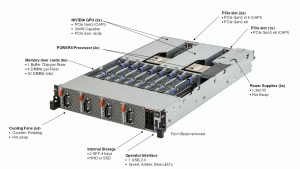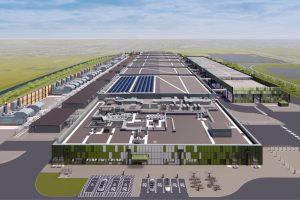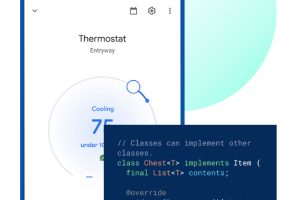
Under the banner of the OpenPOWER Foundation, Google is developing a new server as part of the Open Compute Project.
The OpenPOWER Foundation supports the ecosystem for POWER CPUs, system platforms, firmware and middleware software.
According to John Zannos, chairman of the OpenPOWER Foundation:
“Open building blocks are quickly becoming required options for system design. Collaborative innovation is essential to building the next generation data centre.”
Google is working with Rackspace to co-develop an open server specification based on the new POWER9 architecture, and the two companies will submit a candidate server design to the Open Compute Project.
IBM is expanding its Linux-only systems in its LC line of servers.
IBM intends to add Open Compute Project-compliant systems to its Power Systems LC portfolio to support big data analytics and cognitive applications in the cloud.
This is in addition to three other OpenPOWER Foundation members that recently announced plans for Open Compute Project-compliant, OpenPOWER systems: Mark III Systems, Penguin Computing and Stack Velocity.
Server developer Supermicro is currently developing two new POWER-based servers for IBM. The systems are based on the company’s “Ultra” architecture and IBM intends to add them to the LC server line to add further design options.
The two systems – a storage rich 2 socket, 2U design and a dense 2 socket, 1U design – will be POWER-based, GPU and CAPI acceleration enabled and fine-tuned for cloud and cognitive workloads.
IBM is also working with Nvidia on a second-generation OpenPOWER computing server, which includes support for the Tesla Accelerated Computing platform.
The server integrate POWER8 processors with Tesla P100 GPU accelerators via embedded high-speed interconnect technology. Early systems will be available in Q4 2016.
Rackspace said it has moved “Barreleye” server technology from the lab to the data center. Rackspace and IBM contributed the “Barreleye” specifications to the Open Compute Project in January 2016. The specifications were formally accepted by the Open Compute Project in February 2016.
Aaron Sullivan, Open Compute Project Incubation Committee Member and Distinguished Engineer at Rackspace, says that OpenPOWER processors combined with acceleration technology are “fundamentally changing server and data centre design”.
 Electronics Weekly Electronics Design & Components Tech News
Electronics Weekly Electronics Design & Components Tech News




IBM servers to reduce data centre power with Power? Seriously? Is this a joke? A *small IBM Power S812LC with just a single Power8 10-core chip has a maximum power consumption of 900 W!! Go see for yourself in IBM’s redpaper here: http://www.redbooks.ibm.com/redpapers/pdfs/redp5284.pdf
A standard 2 x Haswell x86 E5-2699 v3 server, 36-cores maximum power consumption around 749 W and a SPARC T7-1 system, which is about 40% faster than 2 x E5 and almost 3x faster than S812LC, from Oracle consumes just 1,318 W, ~2x more performance/Watt than Power8!
@Phil,
I think you miss understood the point. Are you comparing the system design of a regular high performance servers (e.g. s812LC) vs a hyperscale server design? They are totally different design points, and the article is referring to the hyperscale server designs. I hope this was a missunderstood and not the classic FUD from Oracle/SPARC representatives.
That said, I’m sure that openPOWER, with tight integration of POWER cpus, GPUs (nvlink), and FPGAs (capi) will help a lot in the perf/watt and perf/TCO equations.
Thanks,